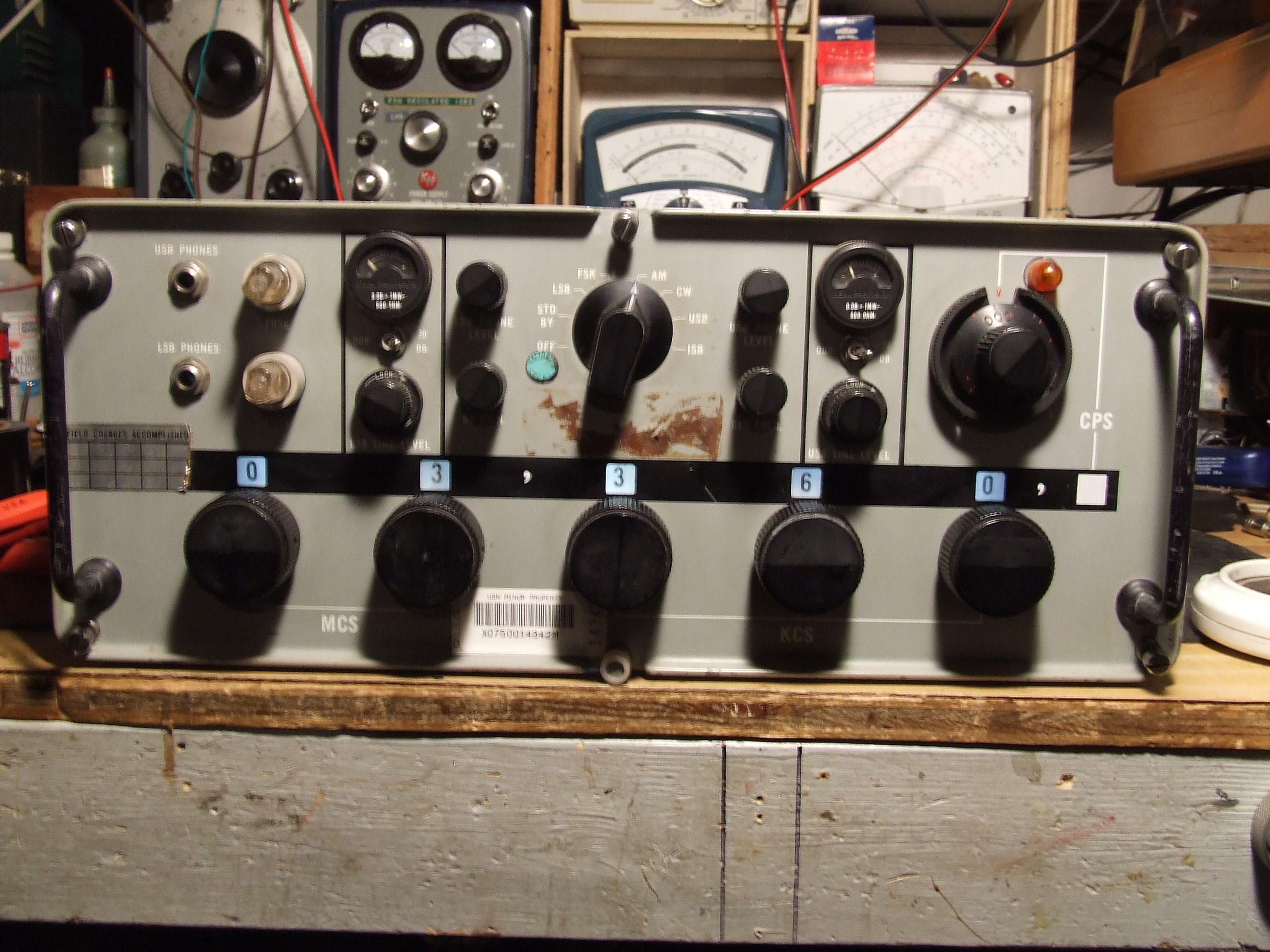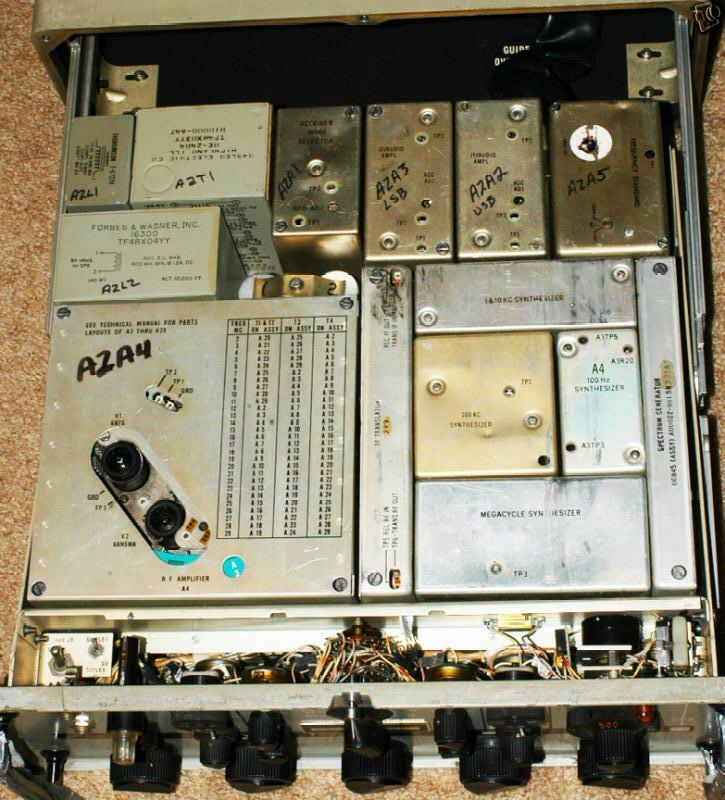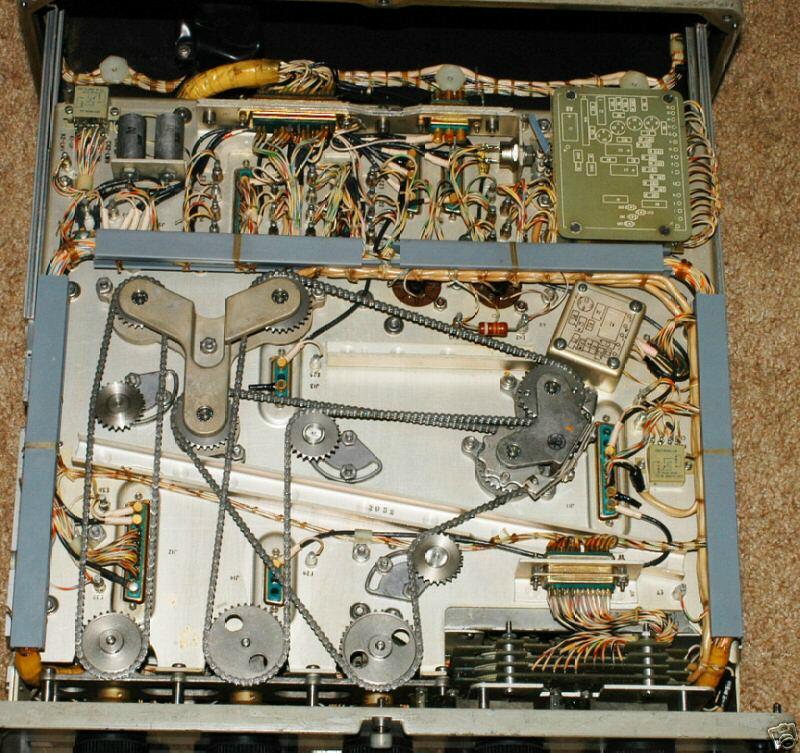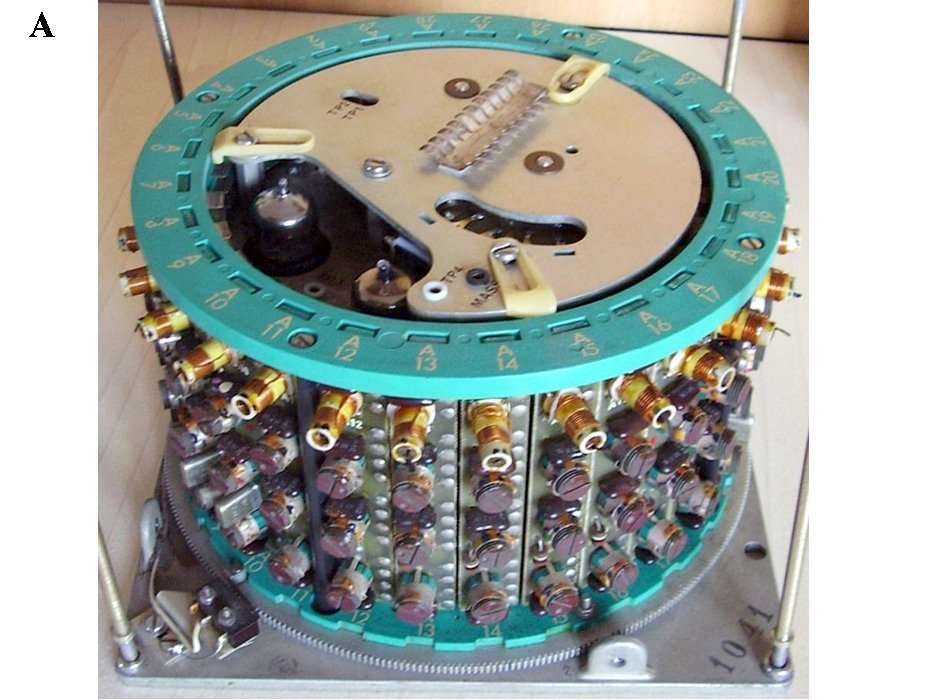That sounds like poor design.
It is, but its what happens on things made to a low price point.
That sounds like poor design.







Amateur radio transceivers are the most complex. They require frequency accuracy beyond that of audio tuners, signal/noise ratios well beyond that of audio equipment (and tuners), and usually provide deep, deep levels of filtration to attain those objectives. The best current radios have minimum discernable signals less than -130 dBm. They also have to support far more frequency agility than an FM tuner, usually providing a receiver that covers bands from 1.6 KHz to 50+ MHz, and sometimes well into the VHF range. Tuning accuracy and frequency precision must be much higher than with FM tuners for audio. Most newer models also have a wide range of controls, requiring a much more complex user interface than audio equipment.
Here are pictures of my amateur radio transceiver, from its manual, from the top and bottom. The schematics cover many pages and would be too much to show.
View attachment 1420881 View attachment 1420882
This is a Ten Tec Omni V, about the same early 90's vintage as much of my stereo stuff, and probably the best discrete-component transceiver every made before DSP came into vogue (the Omni VI had DSP and the best current radios are largely software-defined). And this picture doesn't have a full complement of filters--only two are shown in the IF, with slots for four more. Mine has all slots filled, plus a roofing filter (at the initial RF stage) which in mine is squeezed into the space behind the heatsink. This radio has a 100-watt transmitter that operates in Class AB (Class A for AM, but at 25 watts). I've never seen an FM tuner with the level of tuner control available on this ham radio. Recapping this puppy is going to take some effort (I know--it's on my list of things to do).
Note that this radio does not include its power supply--it runs on 12VDC. The power supply is in a separate box. Note also that it does include a speaker, but that is mounted on the cover. It's a convenience speaker only--most will use high-quality headphones with a radio like this (mine are made by Heil). And it does not include an antenna tuner--needed to match the impedance of the transmitter to the antenna, even when outside the antenna's resonant band. A manually tuned antenna matcher like mine is fairly simple, but a receiver doesn't need one at all.
The external linear amplifier that would be used with this unit is simpler than an audio amplifier. Here's mine:
View attachment 1420891
This is all power supply, and enough impedance matching and tuning controls to properly load the three transmitting tubes. Output is 600 watts, nominal.
And then there is the keyer (often built in to more current radios), and an external DAC/ADC to connect the radio to a computer for sending and receiving digital modes.
Good luck with that. Ten Tec has changed hands and they seem to be servicing again, but service isn't cheap or without risk. Tough times for the radio biz, just as it has been for the American audio equipment producers.
As for me, if I can't fix my Omni V myself, I'll sell something and make the move to Elecraft to hit the reset button. I've been using another guy's Elecraft in contests and it really is just about the best contesting radio on the market. And it's a pleasure to use for rag-chewing, too. Even not working, an Omni V is probably worth a hundred or two to those who need to scavenge parts, and I could probably get some hundreds for my filters if sold separately. I only paid $700 for the rig in the first place, following my usual strategy of buying old enough to be cheap but not so old as to be collectible. But for now it works find, though a slight distortion in the audio that sounds to me like a leaky cap somewhere.
Bigger problem for me right now is the stand of trees I used for stringing wire has been removed, so I'm going to have to erect an actual tower. That has not yet attained the approval of either the Aesthetic Review Board (my wife) or the Homeowner's Association Budget Committee (me).
Rick "KR9D" Denney
Yeah, that pretty much sums up the Kenwood TS-430S I've been using as my main rig for the past year or so:I popped the cover on one of my fathers Yaesu transceivers. 40lbs of stuff in a 15 lb box.
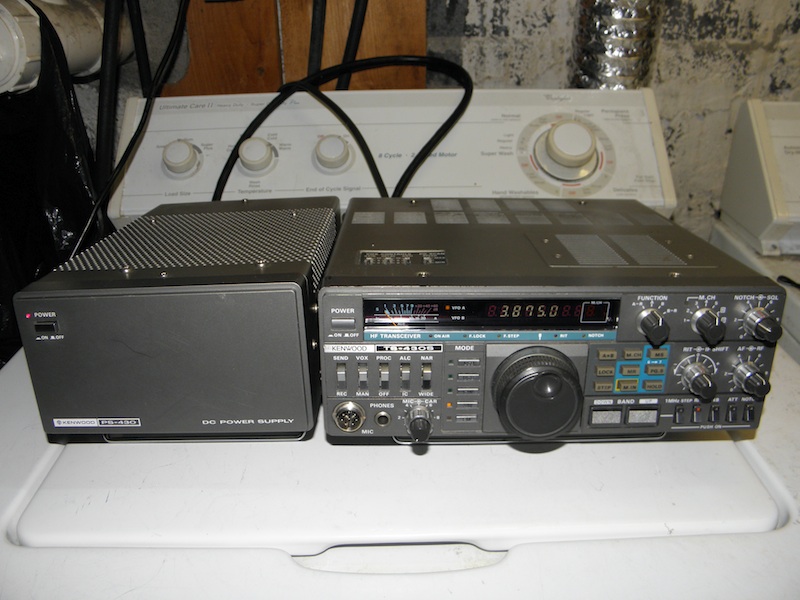

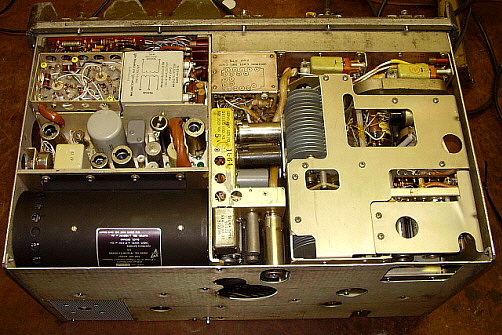
Not as complicated as ECM recievers and transmitters.I popped the cover on one of my fathers Yaesu transceivers. 40lbs of stuff in a 15 lb box.
KAØCSI <--- Pops call sign.
Yeah, that pretty much sums up the Kenwood TS-430S I've been using as my main rig for the past year or so:

Fully solid-state and in a box smaller than most of the early '80s HF gear I've seen, it packs in loads of features like ALC, RIT, and speech processing, along with a digital display and all mode ability (mine has the FM board installed, though it doesn't have the narrow filters for SSB). It'd been serviced at some point before I got it, which I'm grateful for since it looks to be extremely cramped and complicated inside, and these rigs occasionally suffer from problems. Here's a picture of someone else's TS-430S in a partial state of disassembly:

And I also have a piece of tube gear known for internal complexity, a Stewart-Warner T-195 transmitter, part of the military AN/GRC-19 mobile transceiver system along with the R-392/URR receiver (which I also have an example of). Meant to be installed in the back of a Jeep, it was designed to be able to work with just about any antenna, with all sorts of fancy auto-tuning features. It also works on 28V DC, using a pair of dynamotors to produce the two HV supplies it needs (the R-392 receiver works on 28V alone, pretty damn amazing for tube era technology). Here are a couple of pictures of the insides of a T-195 transmitter, showing the various motors and whatnot:
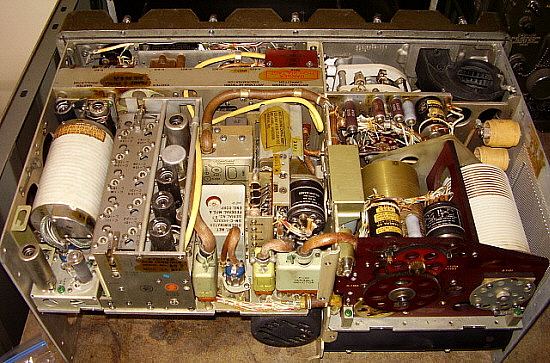

Mine was my second HF rig, after the above-pictured Heathkit. The Kenwood is more than adequate as a substitute for the Heathkit, which is mostly dead above 20M or so. I haven't attempted any contesting with the Kenwood, just some occasional rag-chewing on 80 and 40M. I have since acquired a Drake TR-4C, as well as the aforementioned T-195. I haven't attempted to power either of them up, though they seem to be in fairly good shape overall, so I have high hopes. Here are some pictures of the Drake, which I got a really good deal on at a local AK gathering, of all places:I also have a TS-430S—excellent radio for most purposes, with really good audio and good reports. Mine is not a contest rig, however. Its receiver is too wide and cannot handle a multi-station contest setup, such as Field Day. I had battle and war with mine trying to hear weak signals through our club’s CW station on the same band. Nothing beats the down-conversion architecture of Ten Tec and Elecraft. The Kenwood isn’t the best for CW, either, but nothing beats the break-in operation of Ten Tecs.
Rick “it was my first rig” Denney
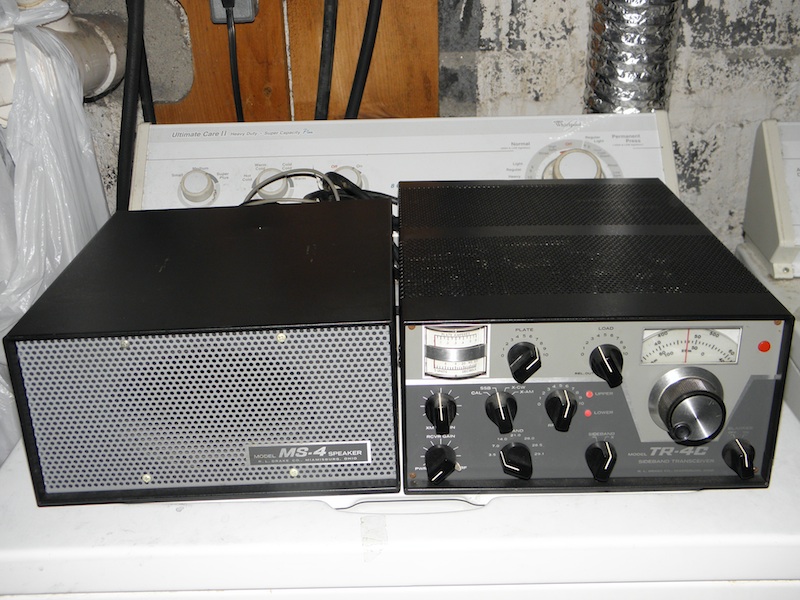
Guessing this was meant as a response to my post. I do have a Navy rig which is rather complicated, an R-1051B/URR receiver:Not as complicated as ECM recievers and transmitters.
